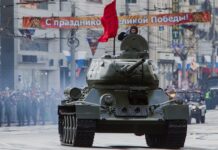However, this would not have been enough if the production system as a whole had not been decentralized and liberalized. While still having the final say on production plans, the Central State granted local, agricultural and manufacturing companies to withhold the profits of the surpluses obtained, once the production quotas set by economic planning had been reached. Chinese reformers understood that capital accumulation had to come from the light industry with a high density of work, which was initially totally overlooked. In other words, the Chinese could offer Western investors an almost unlimited amount of very low-cost labour used to make consumer products, allowing them to be very competitive on international markets. The result would be profits for investors and work for Chinese workers.
In such a boundless country, however, it was necessary to build thousands of kilometers of railways, telegraphic networks, roads, bridges, dams, ports, entire cities. Additionally, China needed heavy industries. Therefore, the capital required to construct all these came from the light industries and trade. From the imperial age, Chinese elites had considered trade a secondary source of income, of little interest, and the communist regime had maintained this attitude. When the new phase began, things changed dramatically. The investments that flowed from the West were directed towards production of those consumer goods that could be exported to developed countries, with very low production costs and very high profits. This seemed to be the specificity of the Chinese way to socialism.
Export growth was spectacular in the 1980s and 1990s, exceeding 14% per year. It provided the valuable currency with which to modernize agriculture and buy industrial machinery, maybe obsolete in the West and Japan, but still usable by promising local industries. In addition, Deng created the so-called Special Economic Zones, areas in which Western companies interested in relocating production, established their industrial plants. Between 1990 and 2002, the country doubled its share in the traditional textile and clothing sectors, all on international exports. Even more so in the electronics industry.
In 2001, China joined the World Trade Organization (WTO), beginning of the country’s complete integration into the world economy. In 2007, with the approval of a law by the National Assembly, private property was recognized and protected, violating one of the “dogmas” of Marxism and arousing the ire of supporters of orthodoxy. Finally, another significant change was the authorization of several large Chinese companies to deal with foreign countries in complete autonomy, detached from central planning.
Consumer socialism and the marketization of the economy
The rapid growth of the well-being of Chinese society, experienced in the 1980s and 1990s, brought about two problems: rising social inequalities and the weakening of the leader’s authority. If unresolved, these problems risked putting the ideological system and political leadership in crisis
The liberalization of the production activities had created considerable social inequalities, which aggravated the pre-existent differences in living standards between the more developed port and commercial cities of the South and the Central and Northern inland agricultural areas. Local governments in poorer regions often were not able to meet even the basic needs of the population. Furthermore, growing corruption within the Party undermined the authority of its leaders and weakened that spirit of absolute obedience to authority which had its ancient roots in the Confucian doctrine.
However, for the first decade of the third millennium, the growing economy continued at a dizzying pace, and the transition from a state model to a market model met with no obstacles.
Nevertheless, the particular form of engagement which combined investment capital import and exporting finished products, seemed convenient for all the actors in the game, especially in the presence of an incipient crisis in the Western economy. The continuous transfer of capital from the US to the People’s Republic allowed the latter to buy, year after year, U.S. government bonds; reaching 1.12 trillion dollars in 2018.
This progressively created a paradoxical situation: the great Asian country with a very low GDP per capita financed the US which could boast one of the highest GDP per capita in the world. The free market allowed Beijing to acquire more and more of multinational companies and invest in infrastructure in countries where this was strategically more useful. China’s penetration into the world economy became increasingly apparent and threatening.
It emerged that Beijing, despite having entered the WTO, did not observe some important rules, such as abstaining from public aid to unproductive companies. There was talk of unfair competition, ‘dumping’, of intellectual property theft against western companies that developed new production techniques. Companies that wanted to invest in China had to accept Chinese companies as partners, contrary to the principle of freedom of enterprise enshrined in the WTO.
It accused Beijing of not respecting that principle of reciprocity, which is the basis of all transnational economic agreements. For example, many of the Chinese acquisitions in the EU would not have been possible if the tables were turned. China’s export accelerations were too fast for the economic system to adapt. It is believed that Beijing’s steel exports, between 2011 and 2016, increased by about 500%.
The interests of the Western world began to diverge from the Chinese ones, and, the supporters of the protection of national economies from Beijing’s trade aggression found, more and more, consensus in public opinion.
The situation worsened from 2012, with the rise of Xi Jinping to the highest office of the People’s Republic. Xi acted vigorously in three directions. He fought hard against corruption within the Party, centralized power to the maximum, assuming numerous positions himself. He pushed to increase China’s presence on a planetary scale, even as a military power. Eventually, by 2013, he launched the colossal project of a new ‘Silk Road’: road, rail and maritime infrastructure at the ports of the Eurasian and African continents. A project in which the countries willing to yield to Beijing’s assertiveness could have collaborated, naturally benefiting from the relative economic benefits.







